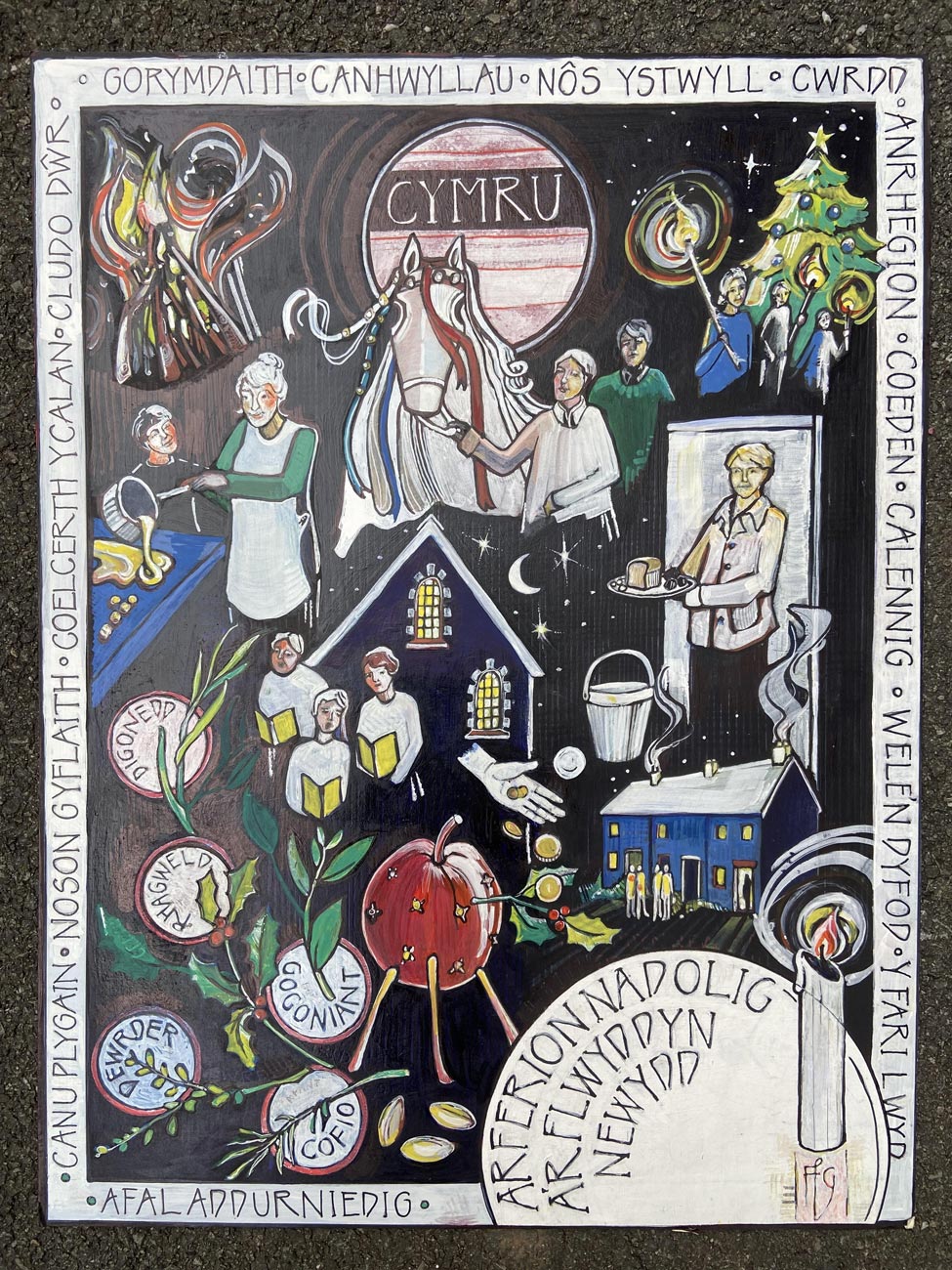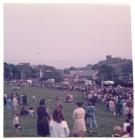Content can be downloaded for non-commercial purposes, such as for personal use or in educational resources.
For commercial purposes please contact the copyright holder directly.
Read more about the The Creative Archive Licence.
Description
Criccieth - Christmas and New Year Customs. In olden days the countryside was a dark place during winter. Before electricity only candles and oil lamps lit homes. The night of Winter Solstice on the 21st/22nd December has the longest hours of darkness; thereafter the period of daylight gets longer and nights shorter.
This was celebrated with many events leading up to and after this date. Most of these originated in pagan or Celtic days but with the coming of Christianity they were adapted to correspond with religious feast days. The result is that by today we have a complicated mixture of pagan and Christian customs. The festive season starts on 6th December with the feast day of St Nicholas, the patron saint of children. In some European countries this is when presents are given and is from where the figure of Santa Claus derives. The houses and cottages would be adorned with holly, ivy and mistletoe. There are many traditions associated with this period, some religious, some secular and pagan. On Christmas Day, the 25th, special services are held at chapels and churches. Plygains, a form of Welsh carols, were sung. Presents are given and received and there is great feasting! Of course, we have the turkey or goose followed by the pudding, often with a silver coin hidden in it for luck. The day after Christmas is Saint Stephens Day. In English this is known as Boxing Day as it was when the alms box in the church was opened and the money shared amongst the pooor of the parish. The wealthy landlords of Gwynfryn, Parciau Mawr and Ynysgain gave sacks of coal to the poor and needy and Dame Margaret Lloyd George gave a present of packets of tea to the elderly of Criccieth and Llanystumdwy. The following week was,and still is, a time for relatives to visit and to go for a walk and maybe call in with the neighbours.
Years Eve was an evening of parties and merriment leading up to midnight. It was considered good luck if the first person to cross the threshold carried bread, a piece of coal, money and water. Making toffee was one tradition. Tricks and mischief was carried out such as stealing gates to allow the old year out and the new year in. The morning of New Years Day was looked forward to, especially by the children who would roam the district collecting gifts and money. Sometimes an apple decorated with holly, cloves and almonds was carried to show at each house or farm and a verse would be recited, wishing luck to the family. Each community had a different version. In Criccieth it was:
C'lennig a c'lennig
A Blwyddyn Newydd dda.
Llond y tŷ o arian a digon o petha da.
One tradition, mainly in the south, was Mari Lwyd (the Grey Mare). This unusual custom consisted of a man dressed in a white sheet topped by the skull of a horse. He would be led around the community. At each house he would challenge the occupants to a rhyming and riddling competition and demanded to be let in where there would be plenty of refreshment. The Folk Museum at Saint Ffagan has done much to revive this tradition and it is now known all over Wales. The holidays ended with Ystwyll (12th Night) on 5th/6th January then darkness prevailed until the coming of Spring.






Do you have information to add to this item? Please leave a comment
Comments (0)
You must be logged in to leave a comment